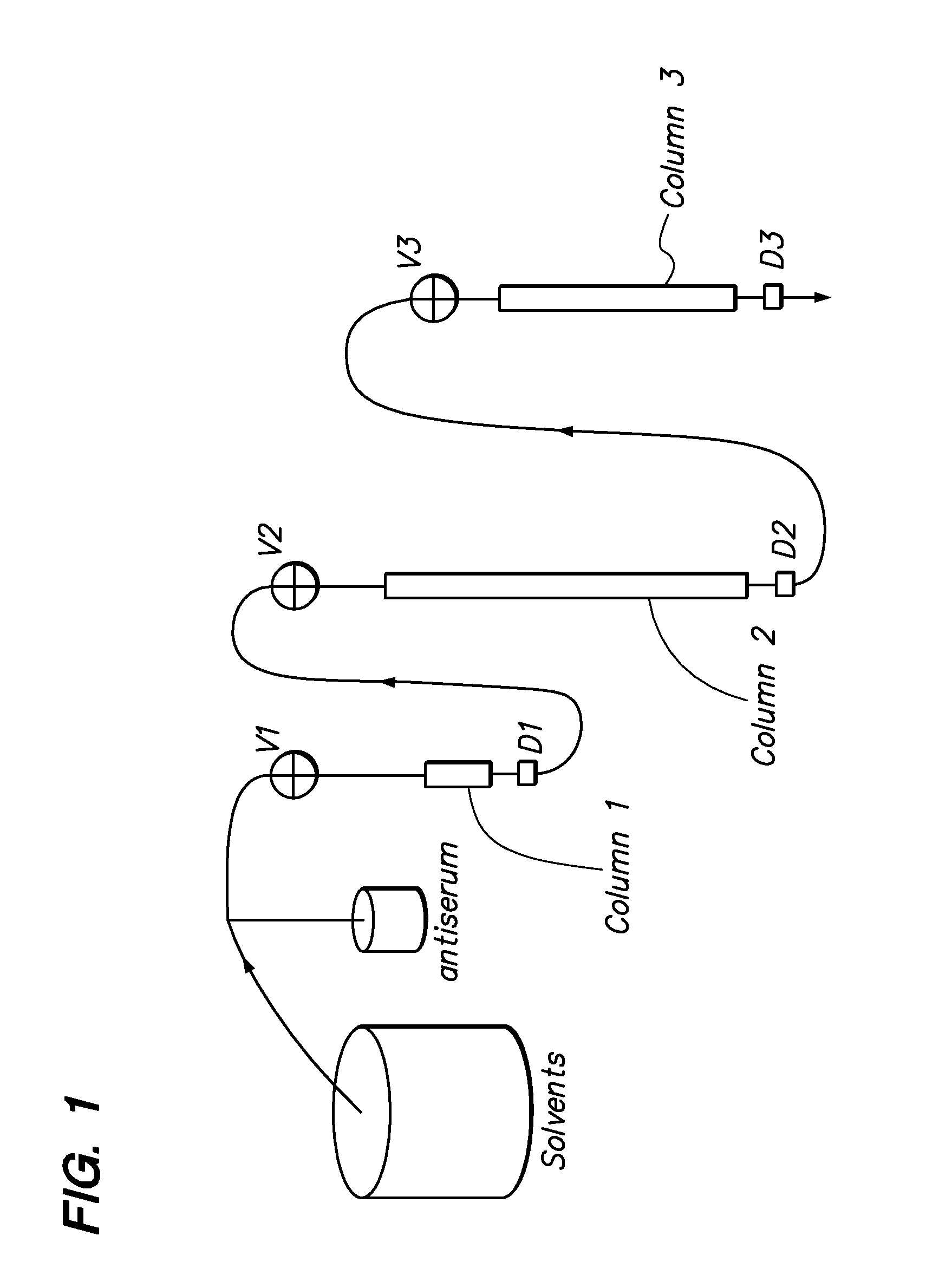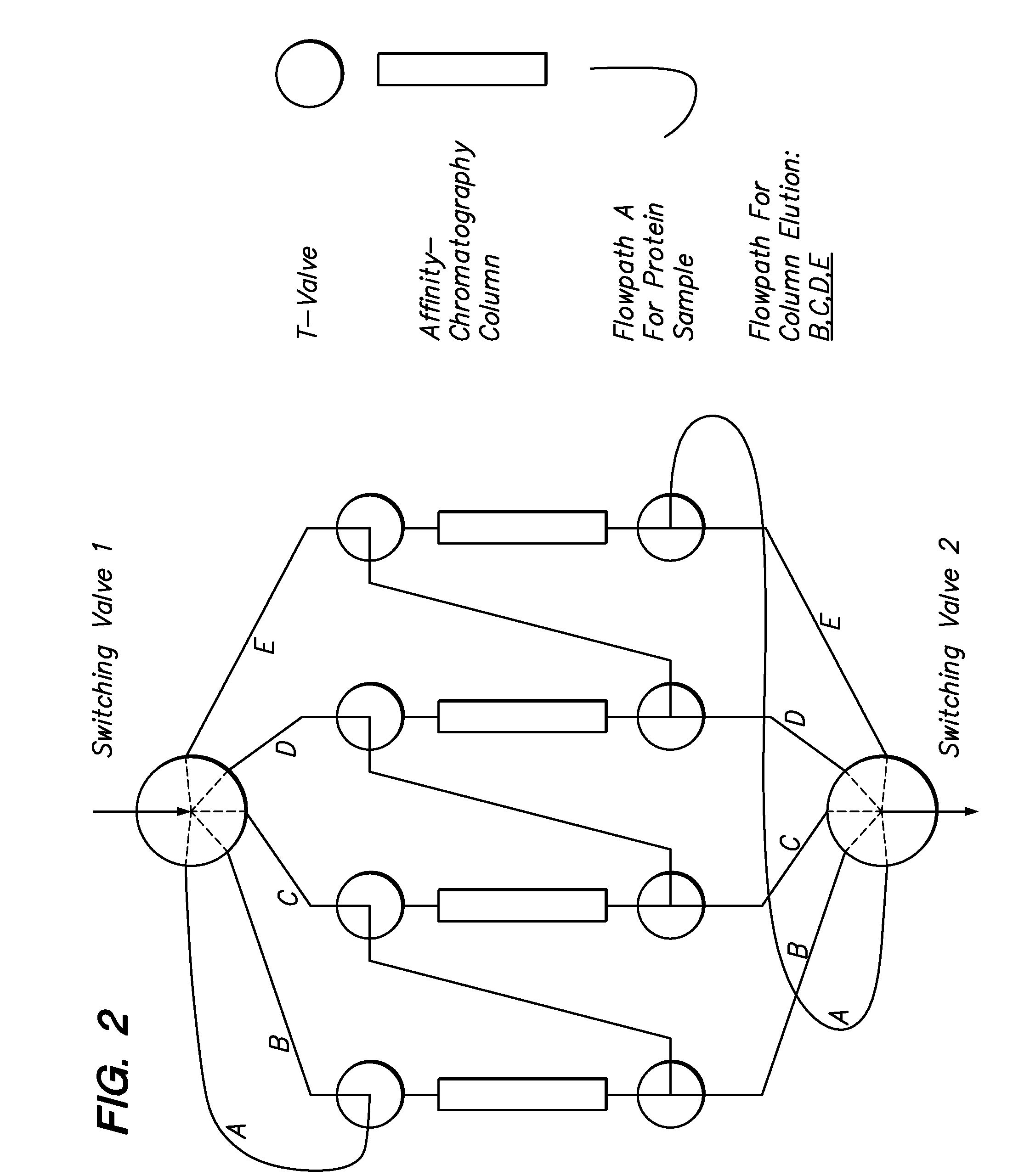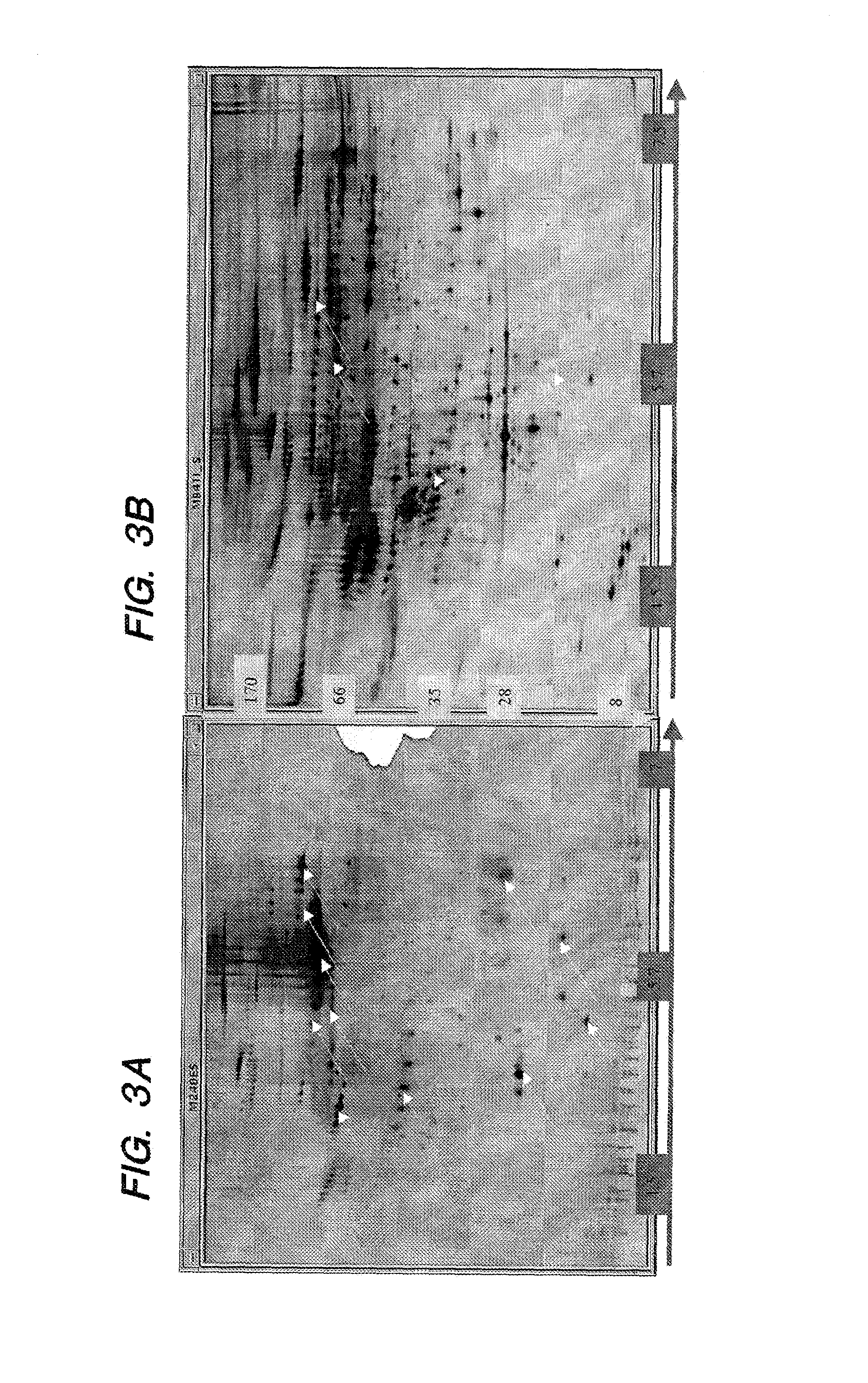Immunosubtraction method
a technology of immunosubtraction and gel, which is applied in the field of immunosubtraction methods, can solve the problems of purified protein spots on gel
- Summary
- Abstract
- Description
- Claims
- Application Information
AI Technical Summary
Benefits of technology
Problems solved by technology
Method used
Image
Examples
example a
PREPARATIVE EXAMPLE A
Generation of Individual Chromatographic Immunoaffinity Matrices
[0105]Unlike previously published methods for immunoaffinity chromatography, the following described techniques yield very high purity of antibodies and very high specificity of the immunoaffinity chromatographic matrices containing them.
[0106]Affinity chromatography matrices were generated using a POROS matrix that is used for perfusion chromatography; derivatives of this matrix were acquired from Applied Biosystems. Size exclusion chromatography columns (SEC) were from Bio-Rad. Antisera were acquired from many different companies and the titers determined to select antisera with the highest concentrations of active pure antibody.
[0107]POROS-AL is a pre-activated (aldehyde-function) matrix that was used to immobilize proteins covalently. For all proteins to be removed from a given body fluid sample, a protein affinity matrix was generated as the “selecting” reagent for pure specific antibodies from...
example b
PREPARATIVE EXAMPLE B
Pooling of Matrices to Multi-Component Chromatographic Systems
[0111]The above-described procedure can be exercised for numerous protein antigens and thus numerous immunospecific antibody-derivatized matrices can be generated. The presently described invention has flexibility of use of such antibody-derivatized immunoaffinity chromatography matrices. Individual matrices are generated and defined volumes or weights can be packed into columns.
[0112]The column capacity for antigen binding can be evaluated by individually loading antigen stepwise onto the column until a saturation peak is observed. Thus, the maximal amount of the antigen that can be trapped on the column can be calculated individually for every antibody-derivatized matrix. Pooling the matrices into multi-component immunoaffinity systems with defined capacities for multiple protein binding allows one to generate a specific chromatographic column for a specific purpose. The following table is an exampl...
example c
PREPARATIVE EXAMPLE C
[0115]The chromatographic separation of proteins in the present invention uses a chromatography station with column switching valves for at least two columns and separate elution of MCAAM column bound proteins wherein they have different characteristics in terms of their solubilities in elution buffers. Most proteins elute from their cognate antibodies under acid conditions (e.g. 5% acetic acid). Some proteins, however, are not soluble in acidic buffers and may require elution with a chaotropic salt / detergent mixture (2 M urea and 2% CHAPS), some hydrophobic proteins may require organic solvent (e.g. 30% acetonitrile) to elute from their cognate antibodies. Thus, in the abovementioned example of serum, alpha-2 macroglobulin and Apo-A1 lipoprotein elute more efficiently with the chaotropic salts and buffers containing 20% to 30% organic solvent buffer, respectively. Working with plasma, fibrinogen is more efficiently subtracted when a ch...
PUM
| Property | Measurement | Unit |
|---|---|---|
| pH | aaaaa | aaaaa |
| concentration | aaaaa | aaaaa |
| concentration | aaaaa | aaaaa |
Abstract
Description
Claims
Application Information
 Login to View More
Login to View More - R&D
- Intellectual Property
- Life Sciences
- Materials
- Tech Scout
- Unparalleled Data Quality
- Higher Quality Content
- 60% Fewer Hallucinations
Browse by: Latest US Patents, China's latest patents, Technical Efficacy Thesaurus, Application Domain, Technology Topic, Popular Technical Reports.
© 2025 PatSnap. All rights reserved.Legal|Privacy policy|Modern Slavery Act Transparency Statement|Sitemap|About US| Contact US: help@patsnap.com



